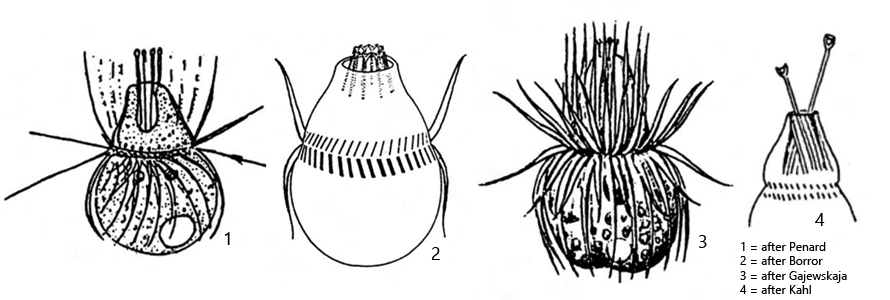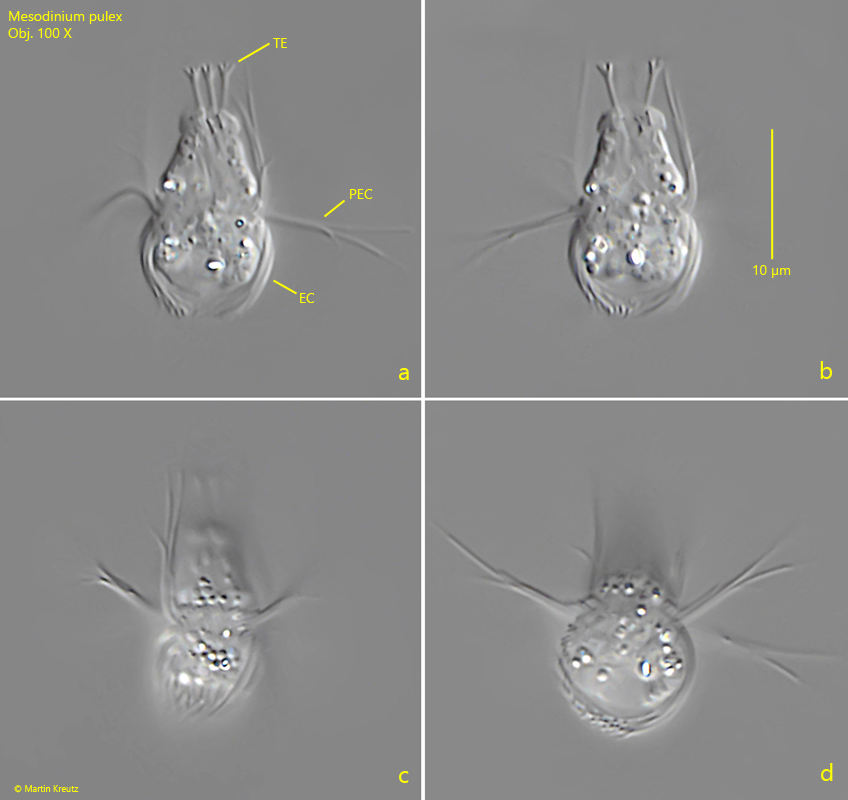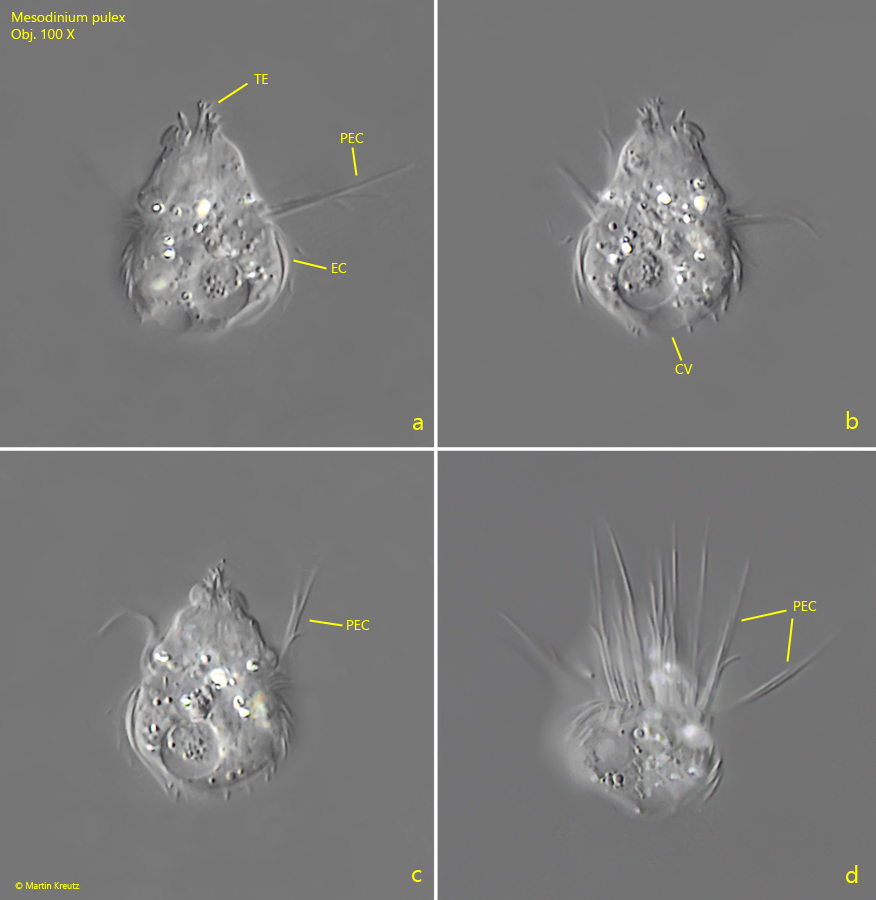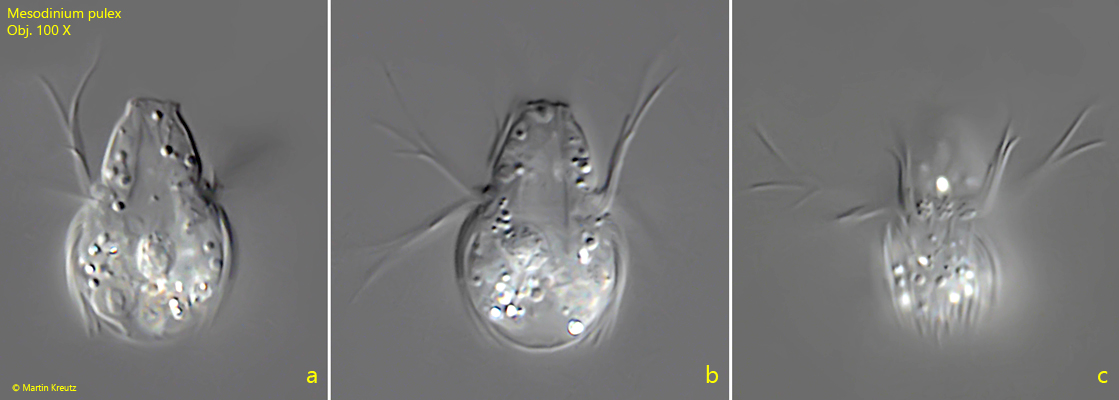Mesodinium pulex
(Claparède & Lachmann, 1859) Stein, 1867
Most likely ID: n.a.
Synonym: n.a.
Sampling location: Simmelried, Ulmisried, Purren pond, pond of the convent Hegne, Bündtlisried
Phylogenetic tree: Mesodinium pulex
Diagnosis:
- body pyriform, with a furrow in mid-body
- length 15–35 µm
- cytophayrnx apical, surrounded by retractable tentacles
- pre-equatorial wreath cirri, directed anteriorly, distal ends splitted
- equatorial wreath of cilia, directed posteriorly
- two spherical maconuclei in mid-body (not confirmed)
- extrusomes absent
- one terminal contractile vacuole

Mesodinium pulex is a common ciliate that can be found especially in old samples with decomposing plant material. I was able to detect it in almost all of sampling sites.
Mesodinium pulex has a characteristic swimming style. Between very fast jumps, the ciliate rests vertically and starts to spin. This is followed by further jumps at a very high swimming speed.
Mesodinium pulex is somewhat similar in shape and size to Urotricha agilis, but the ciliation of Mesodinium pulex is restricted to the equatorial zone, where there is a pre-equatorial wreath of cirri and an equatorial wreath of cilia (s. fig. 1 a). In addition, Mesodinium pulex has no caudal cilia and there are often retractable tentacles around the pharynx. The distal ends of the tentacles were interpreted by Kahl as funnels (s. drawing 4 , above). However, I could clearly see that the ends are finely split (s. fig. 1 a). I have found specimens with outstretched and retracted tentacles (s. figs. 1 a-d and 3 a-c). The function of the tentacles is unknown.
Penard gave the number of macronuclei as two in 1922. However, this observation was never confirmed. I was also unable to determine the number myself. If Mesodinium pulex is squashed, the cell bursts and disintegrates very quickly. There is only one contractile vacuole, which is terminal (s. fig. 2 b).

Fig. 1 a-d: Mesodinium pulex. L = 15 µm. Lateral view (a-c) and view from posterior (d) of a feely swimming specimen. Note the tentacled (TE) with splitted ends. EC = equatorial wreath of cilia, PEC = pre-equatorial wreath of cirri. Obj. 100 X.

Fig. 2 a-d: Mesodinium pulex. L = 20 µm. A second, freely swimmung specimen (a-c) and with pre-equatorial cirri (PEC) directed anteriorly (d). ends. CV = contractile vacuole, EC = equatorial wreath of cilia. Obj. 100 X.

Fig. 3 a-c: Mesodinium pulex. L = 19 µm. A third, freely swimmung specimen with retracted tentacles. Obj. 100 X.